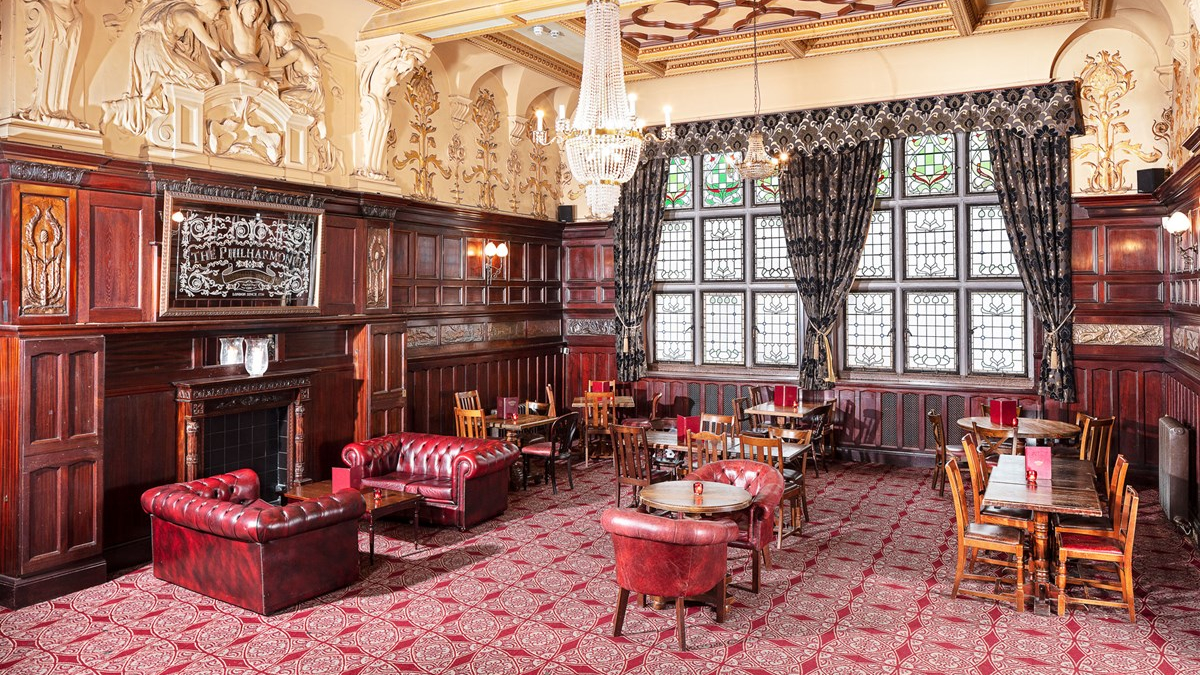
A Liverpool pub has been upgraded to the same architectural protection as Buckingham Palace (Credit: Historic England)
A Liverpool pub has been upgraded to the same architectural protection as Buckingham Palace (Credit: Historic England)
For the first time, a UK pub has been given the same protected status as Buckingham Palace. The interior of Liverpool's Philharmonic Dining Rooms, which was built between 1898 and 1900, will now receive the same legal protections as some of the country's most famous sites.
Historic England, the public body that decides which buildings are to be protected against development, called the Philharmonic "one of the finest public houses in England." They added that its "decorative entrance gates are...[the] finest Art Nouveau metalwork in [the UK].”
The pub is now a listed building, which is one considered to be of special historic or national importance in the UK and given extra protection. The highest ranking in England and Wales is a Grade I, denoting a building "of exceptional interest"; only 2.5 percent of all listed buildings are given this category. The next ranks are Grade II* and Grade II.
Duncan Wilson, chief executive of Historic England, said: "English pubs are some of our best-loved community buildings and are often threatened with closure, so we are delighted to see 11 historic pubs receiving further protection."
The Philharmonic - known in Liverpool as the The Phil - was upgraded to Grade I because of its 'magnificent interiors,' including its gentlemen's toilets that are decorated with the original Victorian features. Bill Bryson, an American-British writer wrote that "there is no place in the world finer for a pee than the ornate gents' room of the Philharmonic," in the travel book Notes From A Small Island.
Two years ago Paul McCartney, a former member of Liverpool's most famous band, The Beatles, gave a surprise performance in the pub.
Images of Liverpool's Philharmonic Dining Rooms
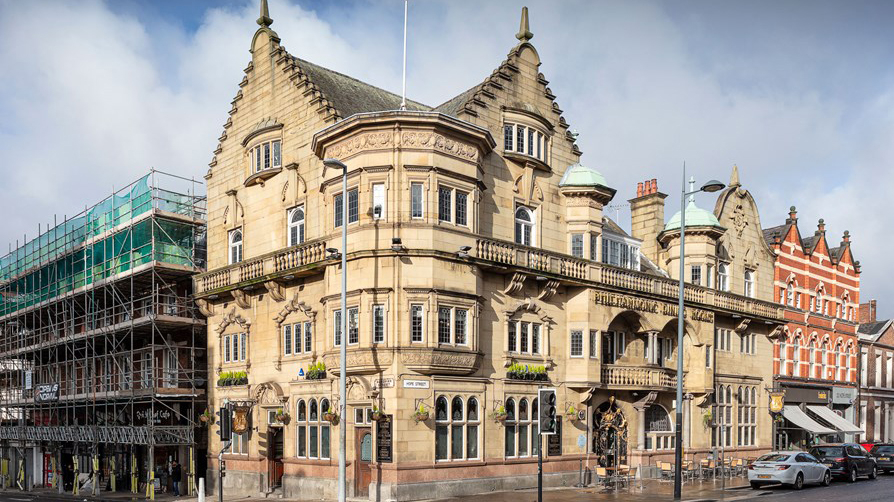
The exterior of what locals call "the Phil" (Credit: Historic England)
The exterior of what locals call "the Phil" (Credit: Historic England)
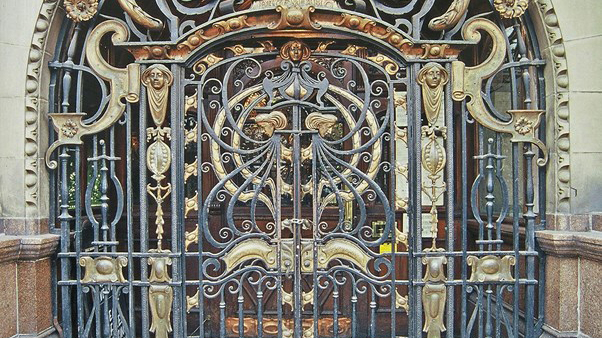
The Art Nouveau gates outside the building (Credit: Historic England)
The Art Nouveau gates outside the building (Credit: Historic England)
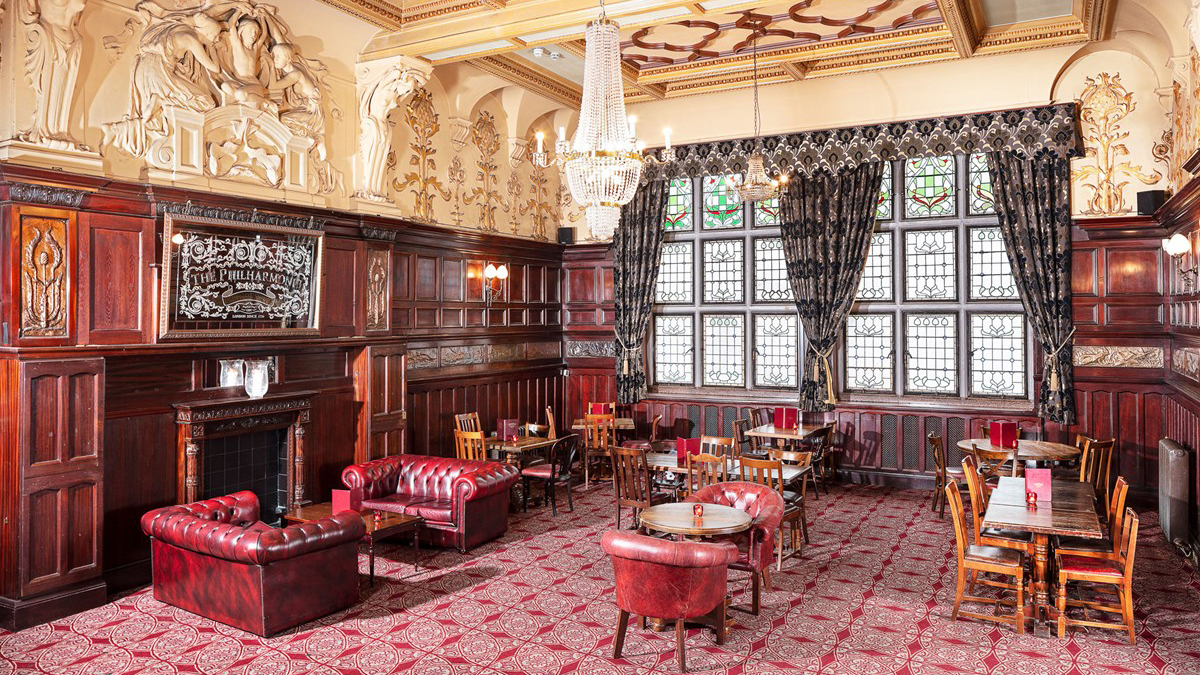
The main dining room used to be part of a gentlemen's club (Credit: Historic England)
The main dining room used to be part of a gentlemen's club (Credit: Historic England)
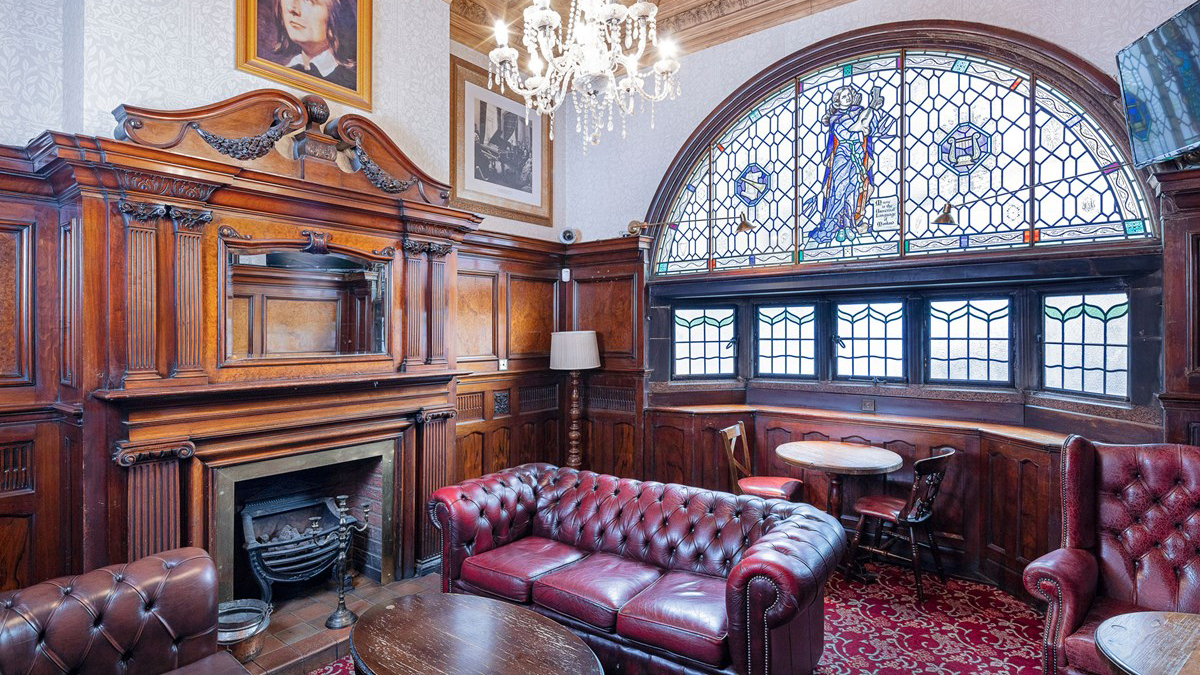
A sitting room inside the building (Credit: Historic England)
A sitting room inside the building (Credit: Historic England)
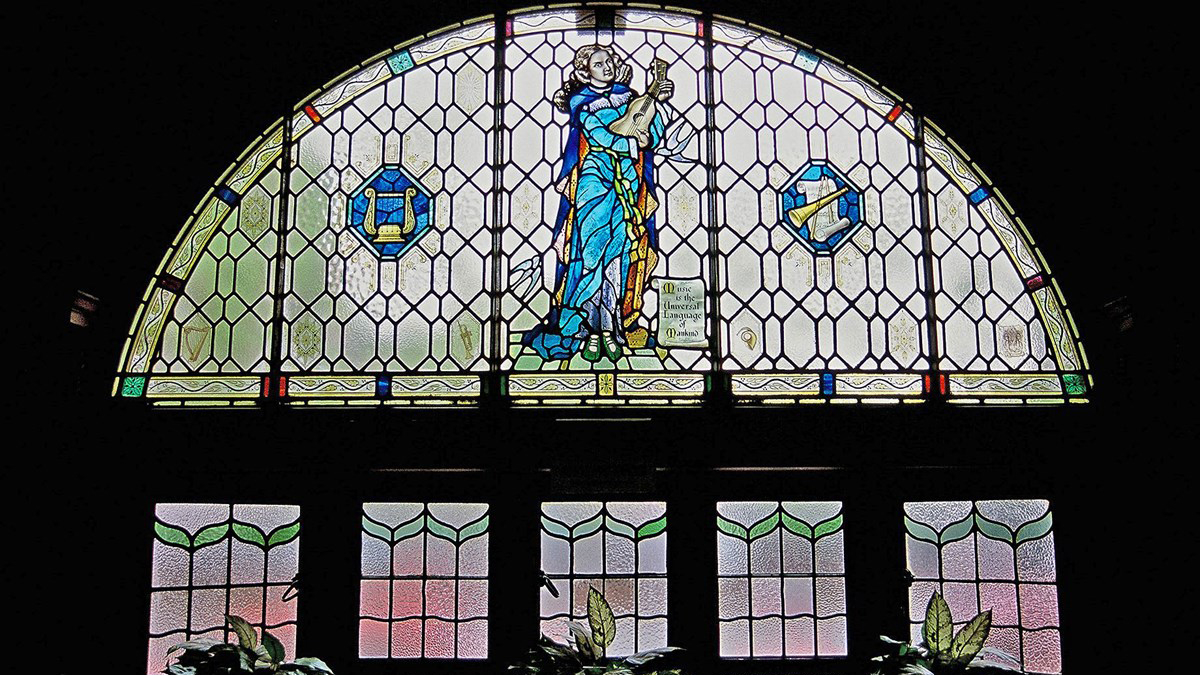
A stained-glass window features the patroness of musicians, St Cecilia (Credit: Historic England)
A stained-glass window features the patroness of musicians, St Cecilia (Credit: Historic England)
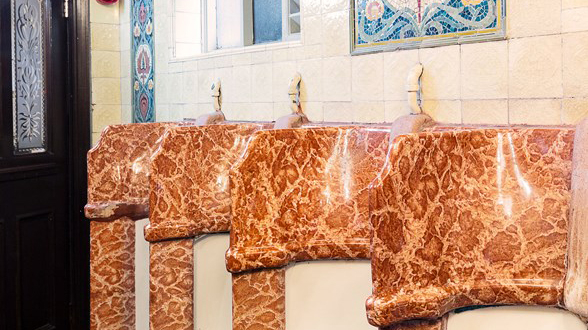
The listed urinals with their original Victorian decorations (Credit: Historic England)
The listed urinals with their original Victorian decorations (Credit: Historic England)
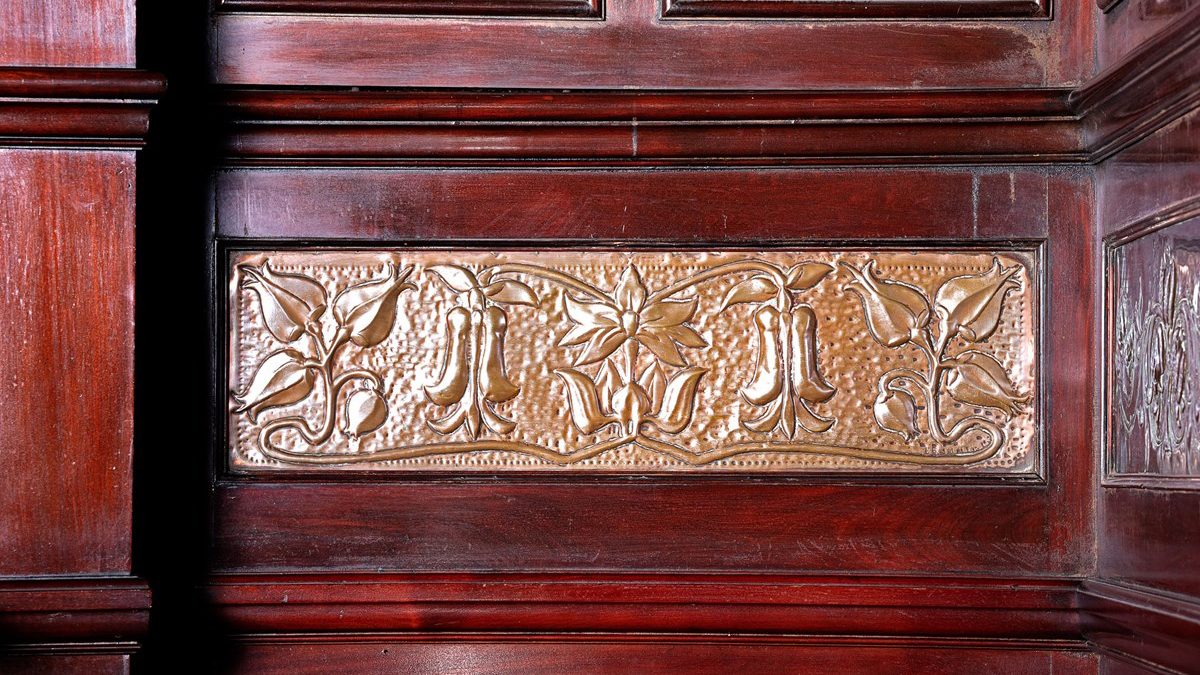
Decorative metal sheeting in the main dining room (Credit: Historic England)
Decorative metal sheeting in the main dining room (Credit: Historic England)
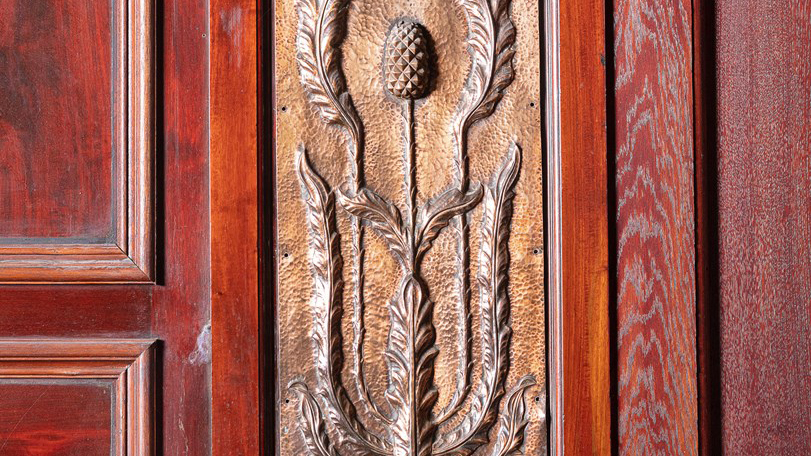
More metal sheeting in the same room (Credit: Historic England)
More metal sheeting in the same room (Credit: Historic England)
Ten other pubs have also received updates to their listings, including four of the eight pubs in the UK which do not have a bar counter. A pub in West Sussex called the Blue Ship has a listed tap room instead of a bar counter.
Another noteworthy pub is Peter Kavanagh's in Liverpool. Its listing was upgraded to protect its tables, which have in-built ashtrays and spilt-drink channels. Many of the other pubs were listed to protect some part of their original design or architectural details which have survived the years intact.
"So few of England's 40,500 pubs retain interiors which have not suffered major alterations over the years," said Paul Ainsworth, the chairman of CAMRA's Pub Heritage Group, the organization that originally campaigned to upgrade the status of these pubs.
"CAMRA has identified 280 pubs whose interiors it considers to be of national historic importance, and we feel it is vital for these precious survivors to be preserved for future generations to enjoy."
Images of the pubs upgraded to protect their interiors
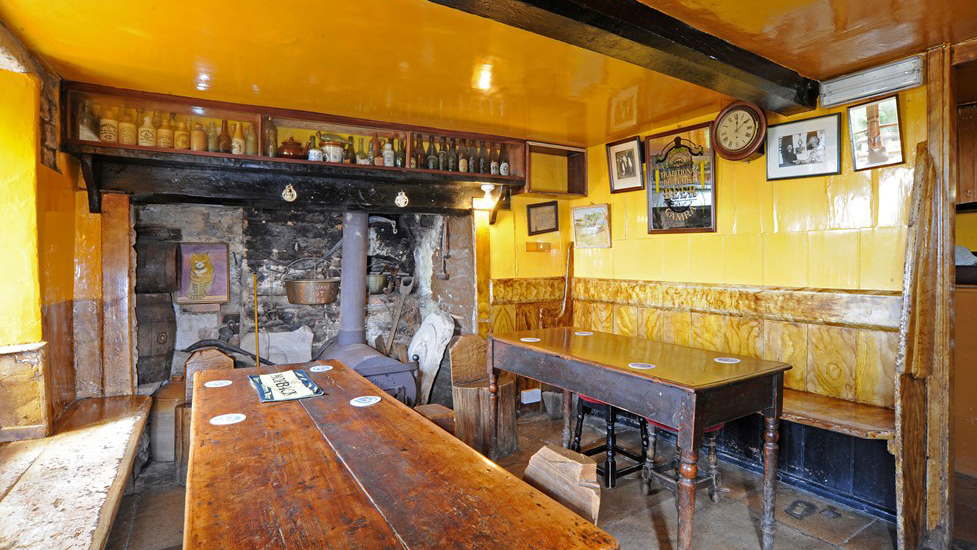
The mid-18th century Square and Compass in Dorset is one of a handful of UK pubs without a bar counter (Credit: Historic England)
The mid-18th century Square and Compass in Dorset is one of a handful of UK pubs without a bar counter (Credit: Historic England)
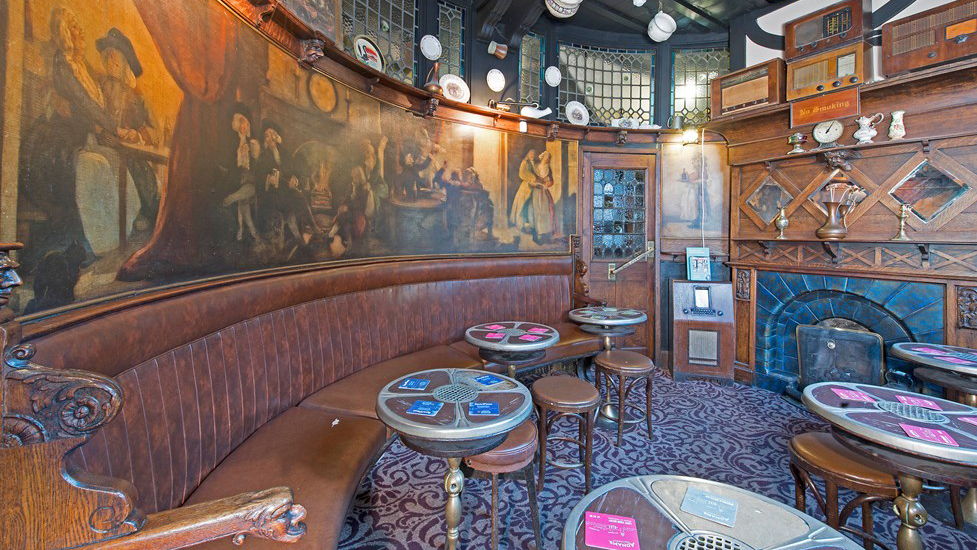
The Grade-II listing of Peter Kavanagh's mentions its original tables with built-in ashtrays (Credit: Historic England)
The Grade-II listing of Peter Kavanagh's mentions its original tables with built-in ashtrays (Credit: Historic England)
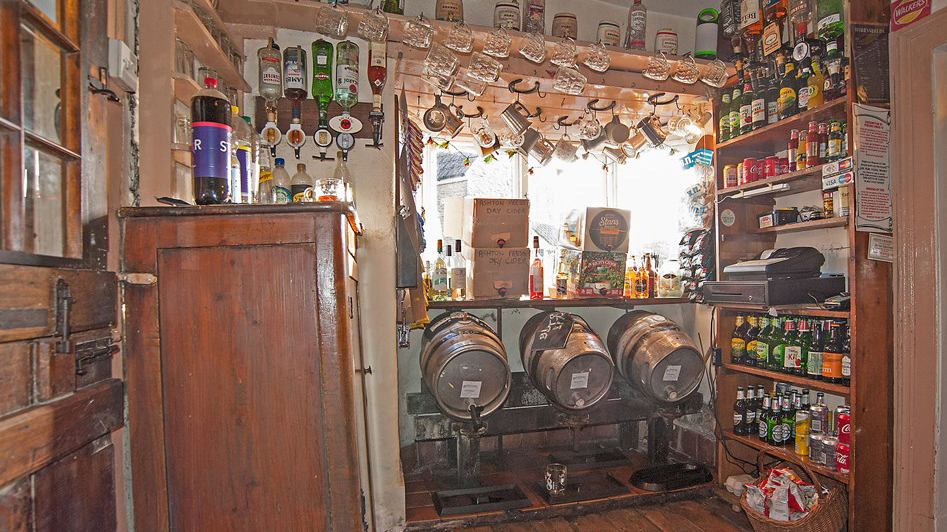
The Tucker's Grave Inn in Radstock has hand-panted signage dating back to the 19th century (Credit: Historic England)
The Tucker's Grave Inn in Radstock has hand-panted signage dating back to the 19th century (Credit: Historic England)
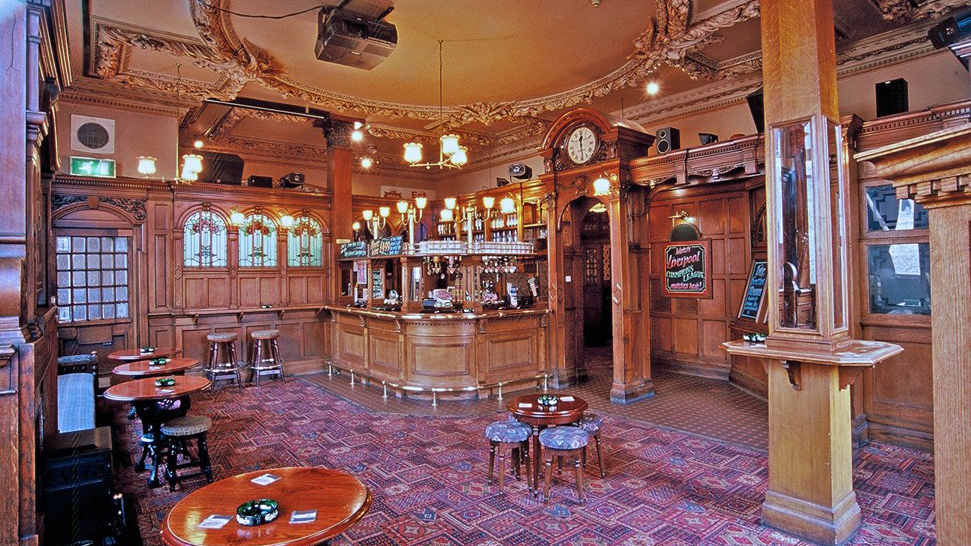
The Vines in Liverpool had its listing upgraded to include its plasterwork, stained-glass dome and woodwork (Credit: Historic England)
The Vines in Liverpool had its listing upgraded to include its plasterwork, stained-glass dome and woodwork (Credit: Historic England)
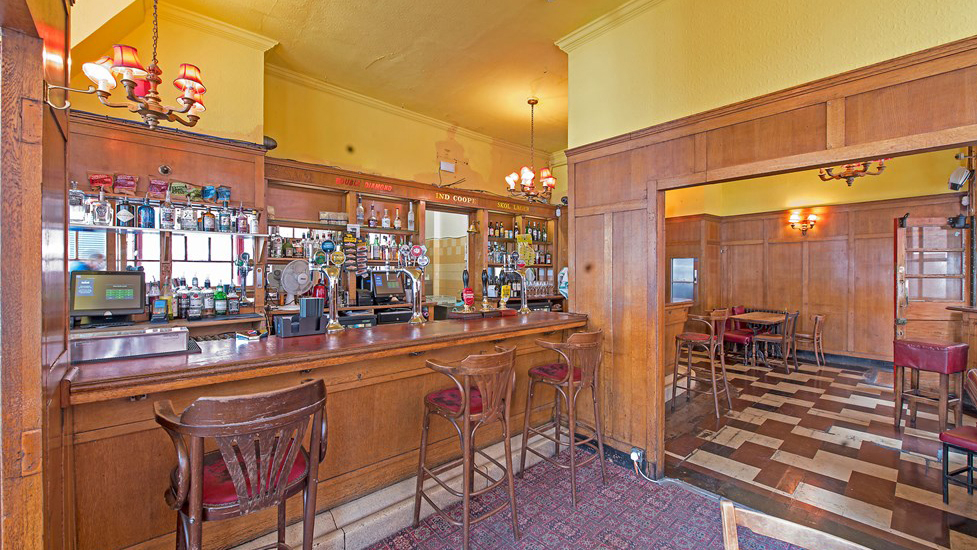
The Coach and Horses in Soho, London, is the former haunt of Peter O'Toole and Lucian Freud (Credit: Historic England)
The Coach and Horses in Soho, London, is the former haunt of Peter O'Toole and Lucian Freud (Credit: Historic England)
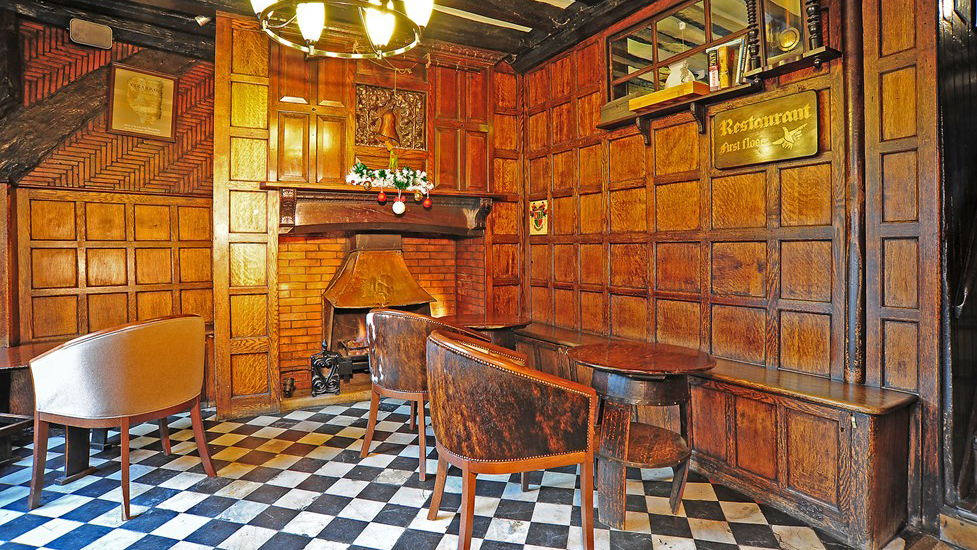
The Haunch of Venison in Wiltshire was a church house in the 1300s and turned into a pub in the 1400s (Credit: Historic England)
The Haunch of Venison in Wiltshire was a church house in the 1300s and turned into a pub in the 1400s (Credit: Historic England)
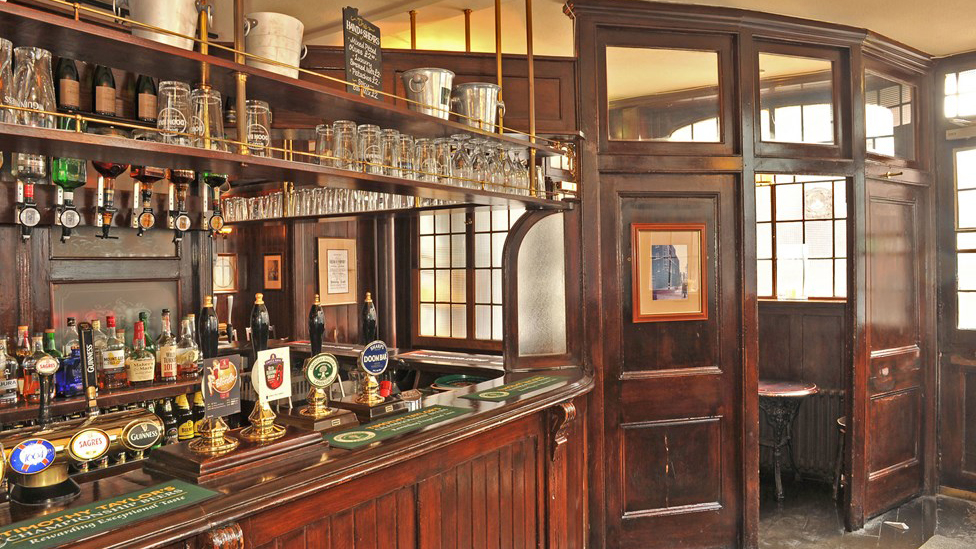
The Hand and Shears in London still has its original fittings and saloon, private and public bars (Credit: Historic England)
The Hand and Shears in London still has its original fittings and saloon, private and public bars (Credit: Historic England)
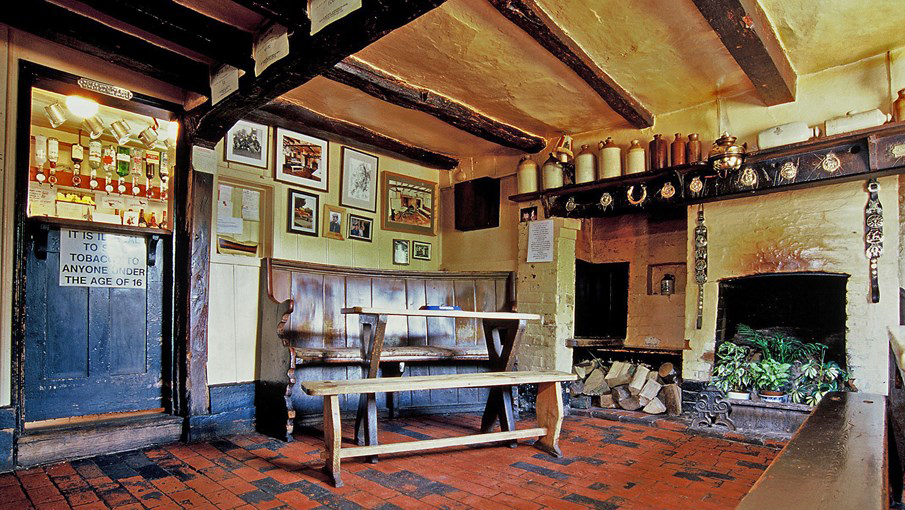
The Blue Ship in Billingshurst is a 16th-century cottage converted into a pub in the 1850s (Credit: Historic England)
The Blue Ship in Billingshurst is a 16th-century cottage converted into a pub in the 1850s (Credit: Historic England)
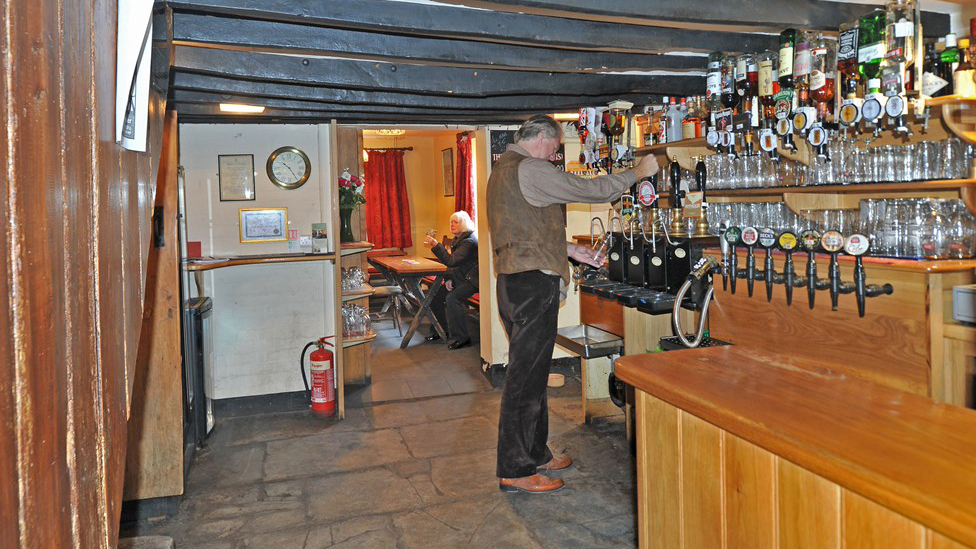
Built around 1800, the Rose and Crown in Huish Episcopi still has its original stone floors and fireplace (Credit: Historic England)
Built around 1800, the Rose and Crown in Huish Episcopi still has its original stone floors and fireplace (Credit: Historic England)
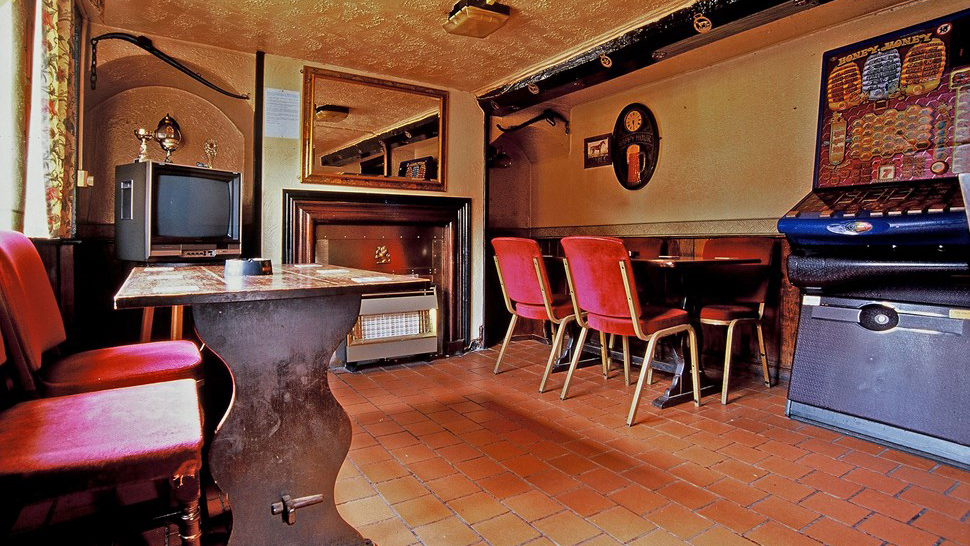
The Red Lion in Staffordshire was originally a house built in the early 1600s. It was converted into a pub in the 19th century (Credit: Historic England)
The Red Lion in Staffordshire was originally a house built in the early 1600s. It was converted into a pub in the 19th century (Credit: Historic England)
Remember to sign up to Global Business Daily here to get our top headlines direct to your inbox every weekday